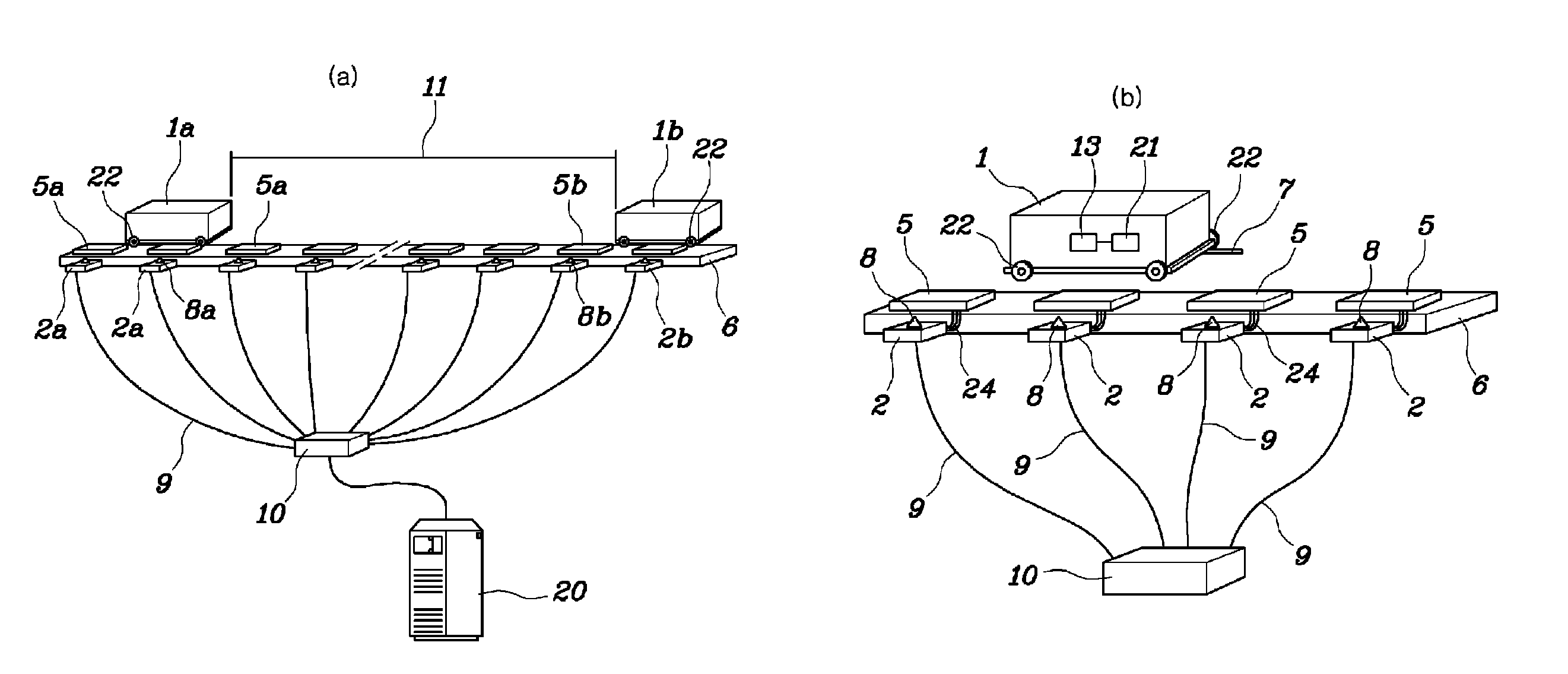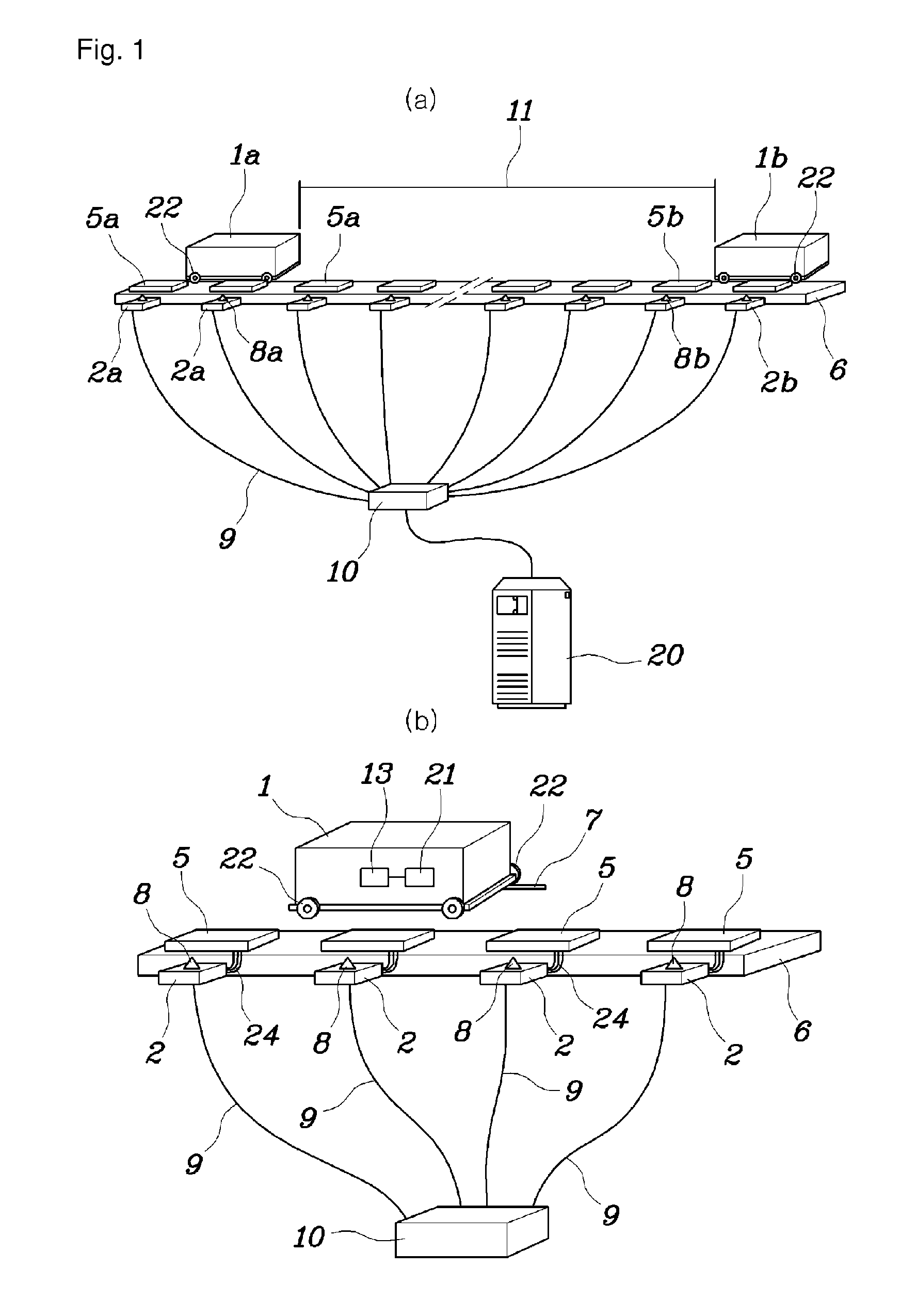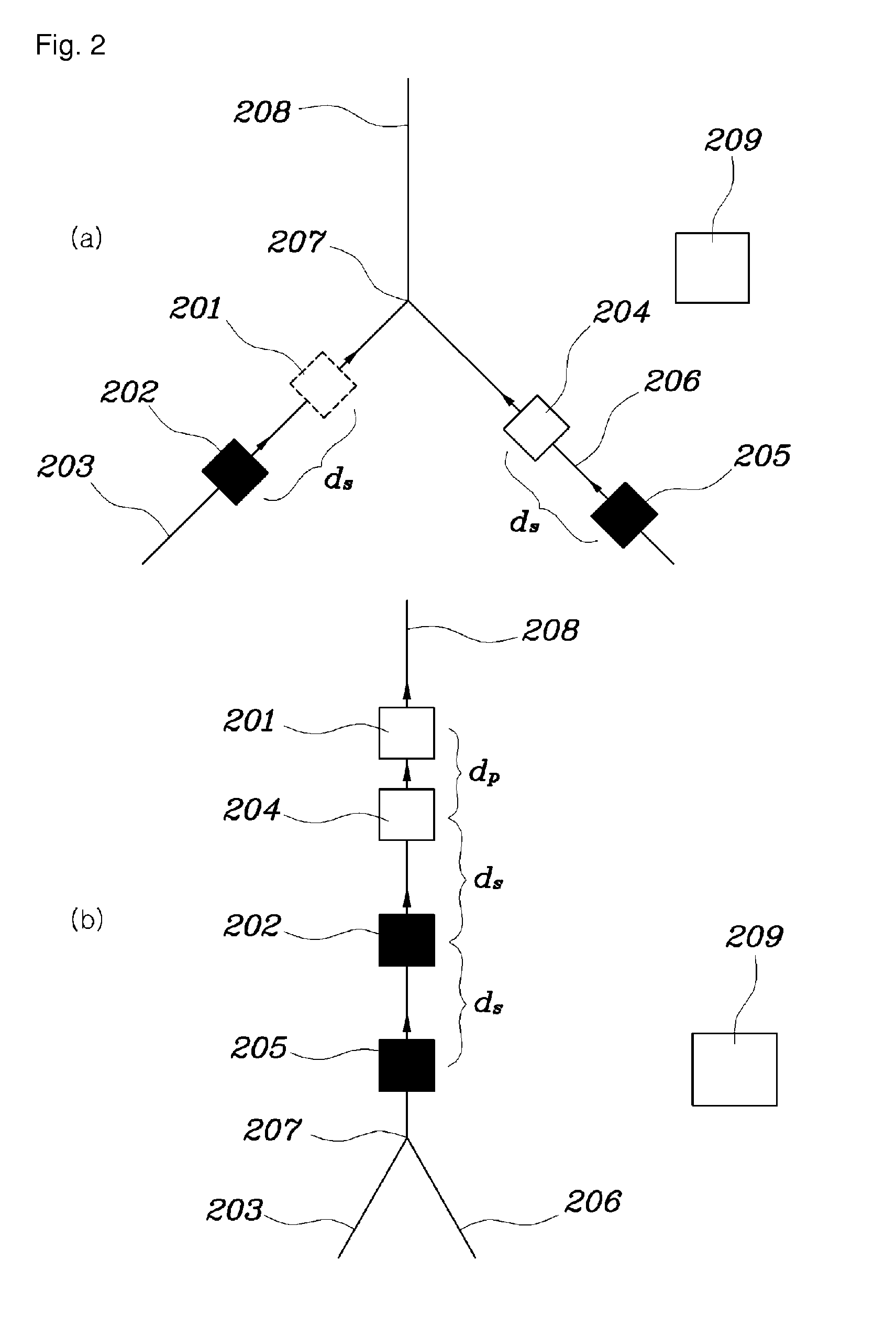Method for platooning of vehicles in an automated vehicle system
a technology of automated vehicle system and platooning, which is applied in the direction of electric vehicles, process and machine control, railway components, etc., can solve the problems of reducing the construction cost of the prt system, affecting the efficiency of the system, and reducing the capacity of the system, so as to reduce the distance between the vehicles, increase the link/track capacity, and avoid time-consuming coupling operations
- Summary
- Abstract
- Description
- Claims
- Application Information
AI Technical Summary
Benefits of technology
Problems solved by technology
Method used
Image
Examples
Embodiment Construction
[0094]In the following description, reference is made to the accompanying figures, which show by way of illustration how the invention may be practiced.
[0095]FIG. 1 schematically shows an example of a part of a personal rapid transit system with in-track type linear induction motor where the primary cores are positioned along the track. However, it will be understood, that the method of controlling vehicles as described herein may be applied to any kind of track network system where automated vehicles are travelling, and in particular to any kind of PRT system, e.g. on-board systems where the primary cores and motor controllers are placed on board the vehicle.
[0096]The personal rapid transit system comprises a track, a section of which is shown in FIG. 1 designated by reference numeral 6. The track typically forms a network, typically including a plurality of merges and diverges. The personal rapid transit system further includes a number of vehicles, generally designated by referen...
PUM
 Login to View More
Login to View More Abstract
Description
Claims
Application Information
 Login to View More
Login to View More - R&D
- Intellectual Property
- Life Sciences
- Materials
- Tech Scout
- Unparalleled Data Quality
- Higher Quality Content
- 60% Fewer Hallucinations
Browse by: Latest US Patents, China's latest patents, Technical Efficacy Thesaurus, Application Domain, Technology Topic, Popular Technical Reports.
© 2025 PatSnap. All rights reserved.Legal|Privacy policy|Modern Slavery Act Transparency Statement|Sitemap|About US| Contact US: help@patsnap.com



